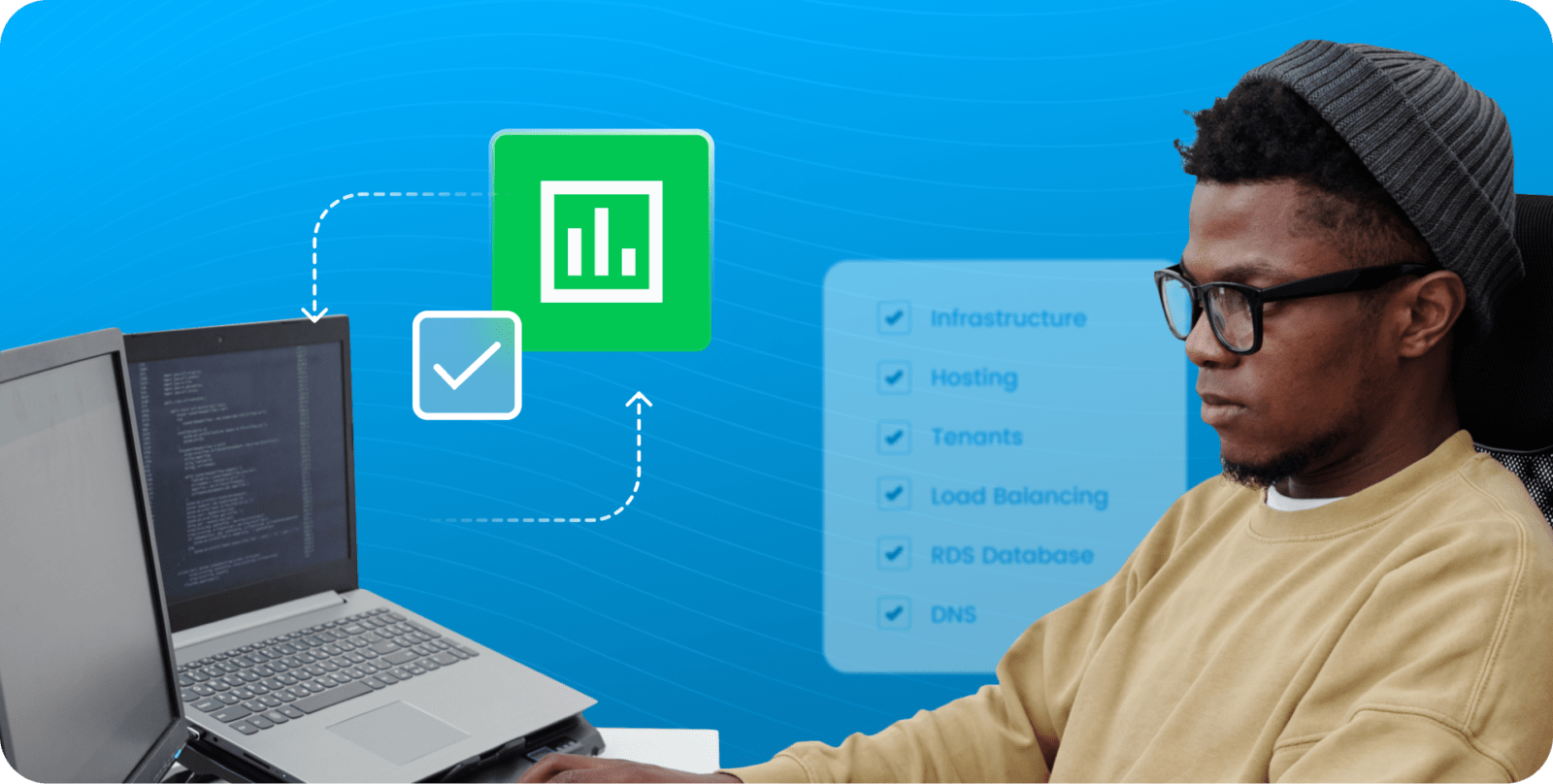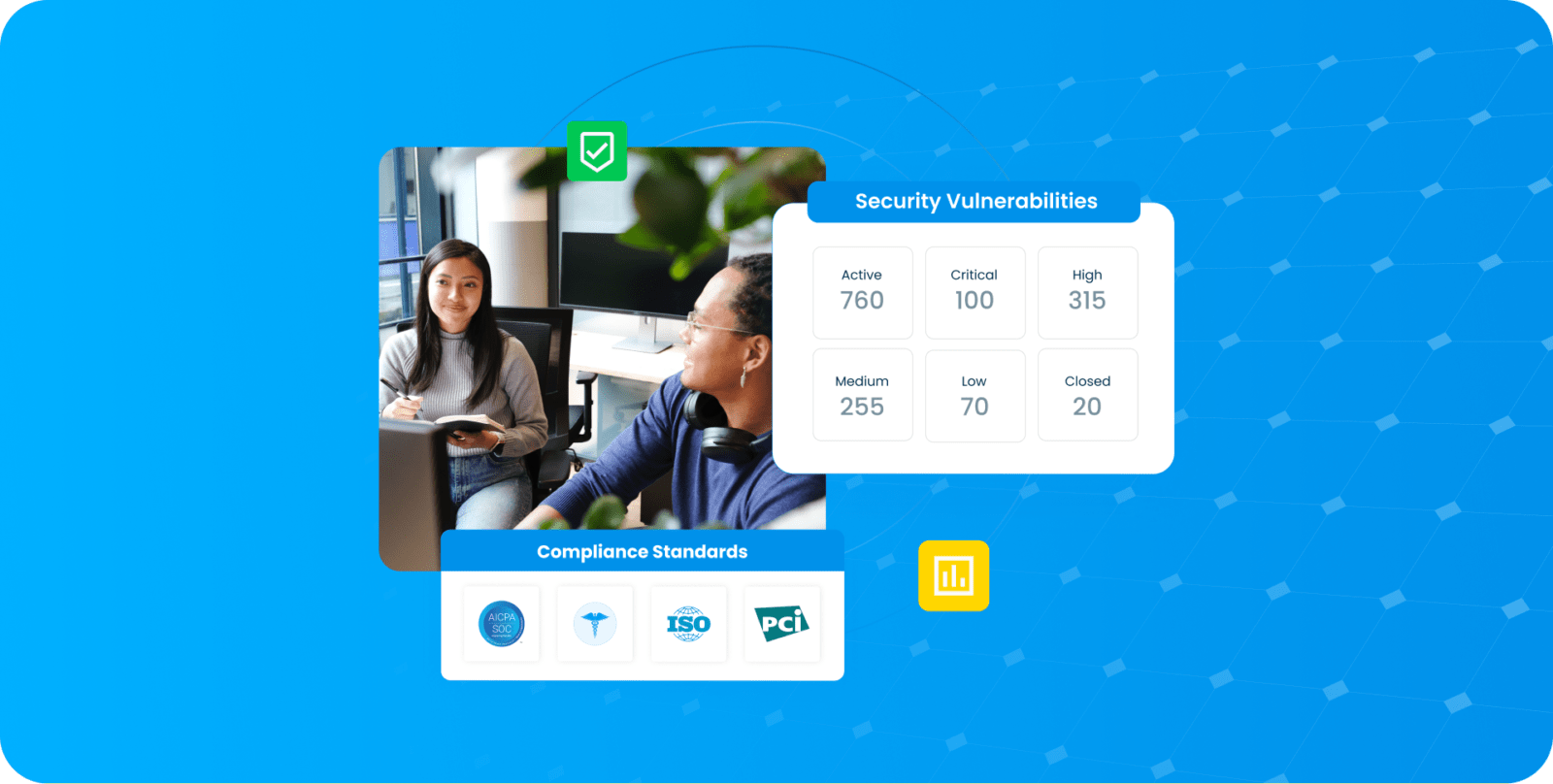How streamlining the software development process reduces time to market
For software engineers, the path to market is long and complex. Manually stitching together thousands of lines of code in hundreds of configurations while maintaining compliance with various regulatory standards is costly and time-consuming, as well as vulnerable to human errors that can delay deployment. To achieve faster and more consistent results, software developers and IT professionals are constantly looking for ways to automate processes throughout the standard application lifecycle. But what is DevOps automation in the modern software development process? Knowing the benefits, risks, and best practices can help engineers find the right solution for their product.
Jump to a section…
What Are the Benefits and Challenges of DevOps Automation?
What Are DevOps Automation Best Practices?
Evaluate Your Specific Automation Needs
Partner With a No-Code/Low-Code Platform
What Is DevOps Automation?
DevOps automation refers to the use of additional technology during the software development cycle in order to reduce the need for manual input. This implementation is designed to reduce time to market while ensuring quality control and regulatory compliance, ideally while also freeing up resources and saving money. Because automation facilitates easier collaboration between the software development and IT departments, it has become a crucial part of DevOps culture, allowing these teams to quickly build, test, and iterate without slowing each other down.
Automations can be effective in isolation, but it’s important to also view them through the lens of orchestration. While automation can refer to numerous different individual processes, the collective use and synchronization of automations is known as DevOps orchestration. Orchestration turns these automated concurrent processes into an efficient workflow, ensuring they don’t cause production slowdowns or leave room for vulnerabilities. When implementing DevOps automation solutions, it’s important to zoom out and consider orchestration as a whole; make sure your team has a thorough understanding of how these automations can and will work together to enhance the entire development cycle.
What Are the Benefits and Challenges of DevOps Automation?
DevOps automation can positively impact the development cycle in a number of ways, but its most critical benefit is decreasing time to market. With proper orchestration in place, engineers can automate many facets of the building, testing, and deployment processes, potentially eliminating months of manual labor. This saved time also amounts to significant cost savings along the way, allowing tech companies to get more out of their budget.
Many DevOps automation solutions have built-in compliance implementation for regulatory standards like PCI DSS, HIPAA, SOC 2, and others. Standardized implementation can offer some peace of mind, but it’s essential to ensure that any solution you use covers the regulations that pertain to your specific industry. Even with automation in place, it’s still your team’s responsibility to make sure your product is compliant in order to meet consumer expectations and avoid costly violations.
DevOps automations are intended to simplify development; no-code/low-code platforms can further streamline operations. Solutions like DuploCloud have made it easier for development teams to translate complex processes into easily manageable configurations without the need for additional training.
No-code/low-code solutions save time and money. Adoption of no-code/low-code automation can lead to cloud operation cost savings of more than 50%. Read more in our free report, The State of No-Code/Low-Code Cloud Automation:

What Are DevOps Automation Best Practices?
To reap the benefits of DevOps automation while avoiding potential pitfalls, project managers and their teams should follow established best practices. These guidelines will help you find the right automation solution and ensure that the path to launch is as smooth as possible.
Evaluate Your Specific Automation Needs
The first step towards DevOps automation is auditing your current processes to find opportunities to streamline development. Automation opportunities vary from company to company and industry to industry; there’s no single solution that benefits everyone. For example, you may want to start by automating development and scaling up to compliance and security codes, but if you’re in an industry with advanced regulatory standards, you’ll likely need a more thorough solution right off the bat. An enterprise-grade solution may be appropriate for global businesses, but start-ups run the risk of over-automating and making processes more complicated than they need to be. By having a comprehensive view of how automation can benefit your specific processes, you’ll be able to better evaluate potential solutions.
Make Security a Priority
The race to market often feels more like a sprint than a marathon. Increased focus on efficiency and speed often cause security and compliance concerns to move to the back burner, a problem for another day. In DevOps automation, however, you need to prioritize security from the very beginning. Discovering that you’re falling short of regulatory guidelines just before launch can be catastrophic, not only delaying your launch but increasing costs as your team works backwards to implement security measures that should have been there all along. Before beginning the automation process, know your industry’s specific regulations and look for solutions that offer out-of-the-box compliance controls.
Partner With a No-Code/Low-Code Platform
You could hire experts to develop automation processes by creating code from scratch, but wouldn’t those resources be better used elsewhere? A no-code/low-code platform drives automation by design while standardizing key processes specific to your development cycle. With the right DevOps automation partner, you can focus less on individual automations and more on orchestration as a whole.
At DuploCode, our no-code/low-code DevOps automation platform accelerates infrastructure provisioning by a factor of ten, while reducing costs 75% when compared to the standard application lifecycle. Out-of-the-box compliance controls with guaranteed auditor approval put security at the forefront of the development cycle by mapping out the exact specifications provided by regulatory bodies. DuploCloud’s self-service approach makes it easy for engineers and developers to automate the DevOps process through a unified interface with no additional expertise needed. To learn more about how DuploCloud can help, reach out for a personalized demo.








